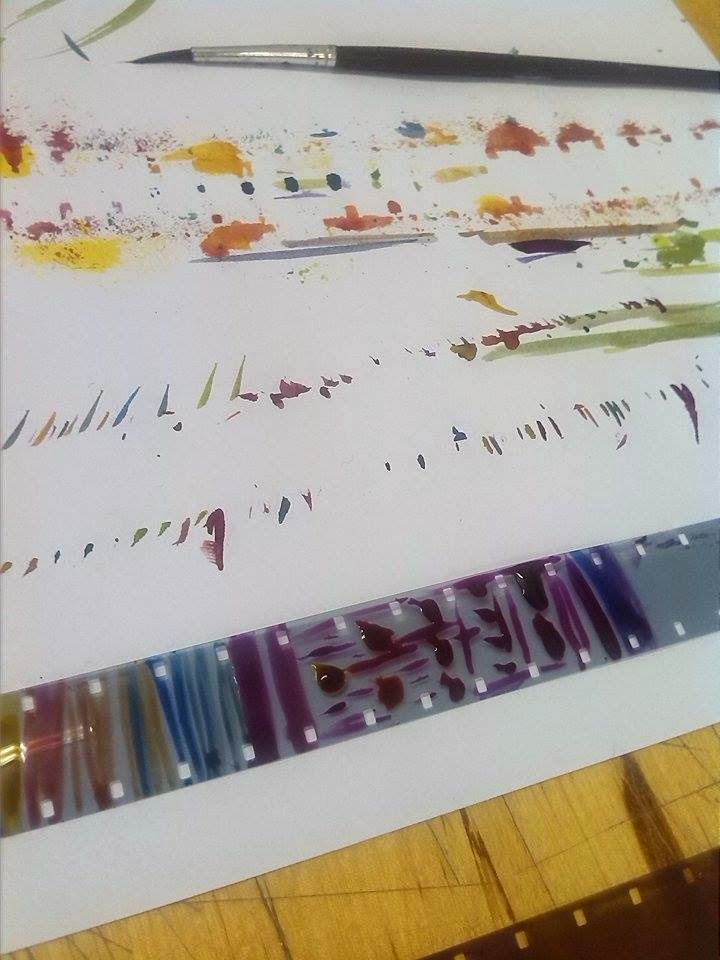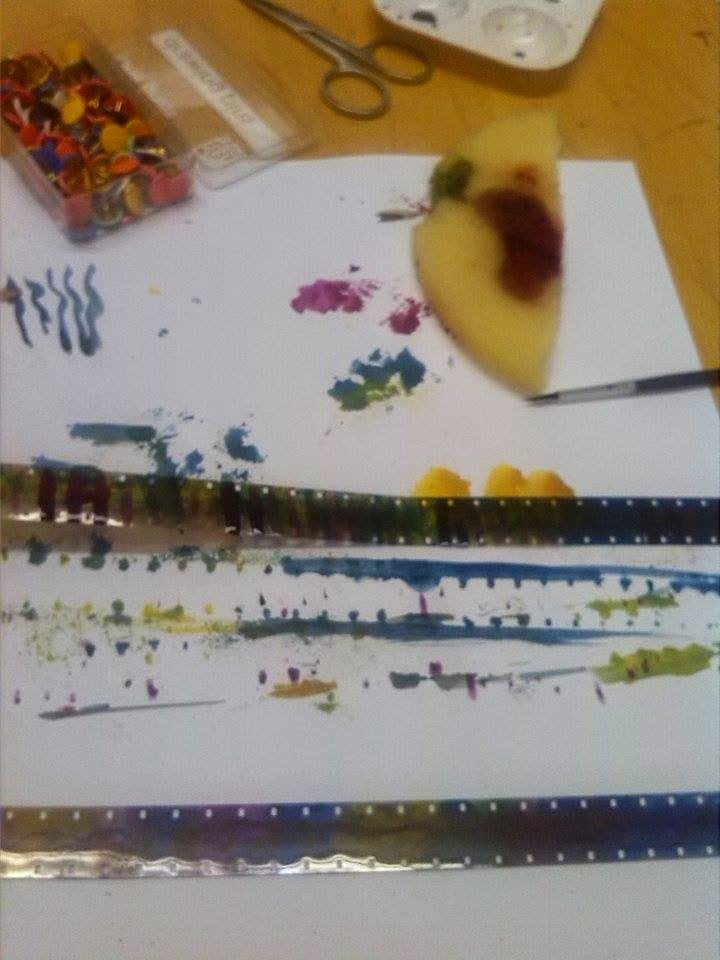After being given the brief for the 16mm Filmstrip Project, we were shown the animations of Len Lye and Norman McClaren due to the way the colours and patterns were so intricately choreographed together.
This video clip by Norman McLaren, 'Begone Dull Care' 1949- is one I admire due to the intricacy of this production, especially with the overlay of film that was used in the feature to provide a melodic combination of patterns. Applying music overlaying the film was beautiful.
After having watched the following of Norman McLaren's pieces, I felt truly inspired to produce work of a similar sense, in that it would also inherit an aspect of rhythm and choreography, allowing the patterns and forms of lines to interact with the music.
 I'd collected the following materials to scrape and scratch as well as colour onto the film:
I'd collected the following materials to scrape and scratch as well as colour onto the film:- Segments of sponge- Norman McLaren and Len Lye used a lot of sponge work to produce alternate textures that couldn't be achieved simply by using a paintbrush.
- Nails and screws- offer a sharp tip to scrape and scratch into the film's surface, producing a more intricate form of line depth and texture.
- Scissors- Offer a thicker point for scratching into the film which could then allow more light through once captured.
- A colour palette- allowed me to mix my own colours together without cross contaminating the pigment dyes.
- Drawing pins- produced a finer line definition with scratching into the film.
- Scalpel- a bolder, more definite line could be achieved by scraping the scalpel into the film efficiently.
- Pigment dyes- offered a vibrant variety of colours in alternate line forms and patterns.
- Paint brushes- alternate shapes and sizes to produce different forms of colour and patterns.

My thoughts after completing the overall pieces is what audio could be added? Could I transform the debris of the filmstrip production into it's own animation? How would this create it's own composition? I found the production of the piece quite interesting to see how the film looks underneath the microscope camera, and how close up and vibrant the patterns and colours appear due to it.
I've started to produce a stop motion effect on the left over marks made on paper from the filmstrip by using the same technique but with the paper instead of film. The overall composition I found quite easy to create with the paper and film, but I do have a newfound appreciation of the skill that McLaren inherits for the films he creates to resemble the music that he was representing, especially as I know for a fact that he didn't get the technology of iStopMotion, and had one chance to show it as the projector could've easily 'eaten up' his film.
No comments:
Post a Comment